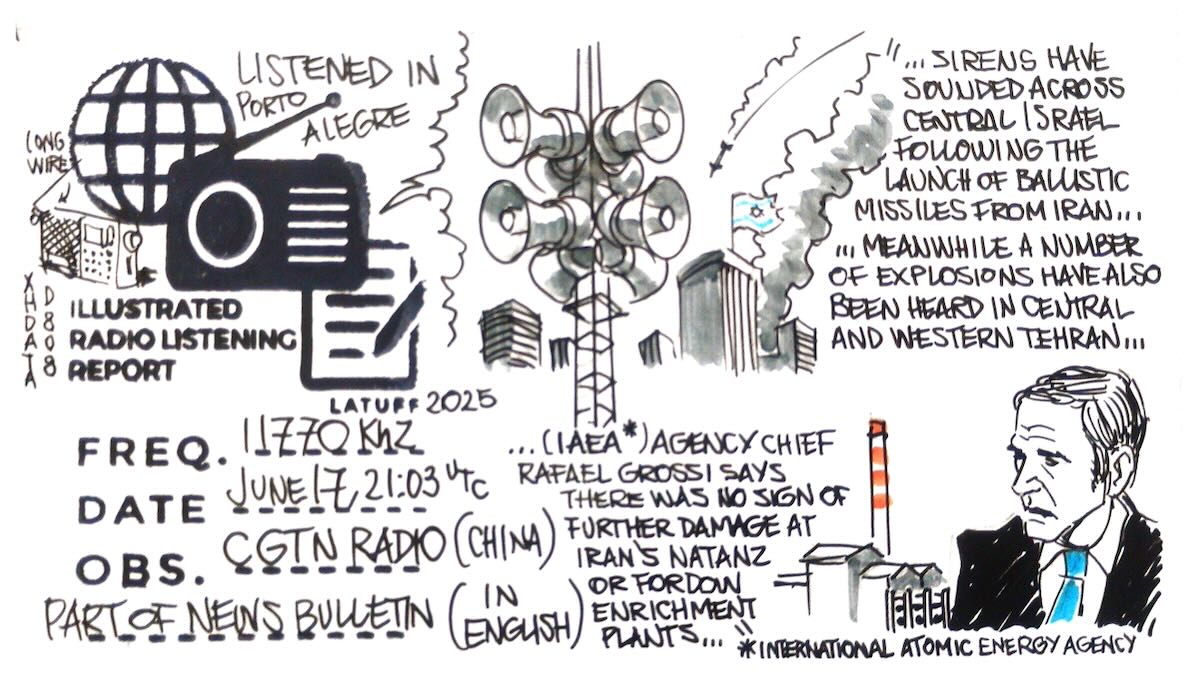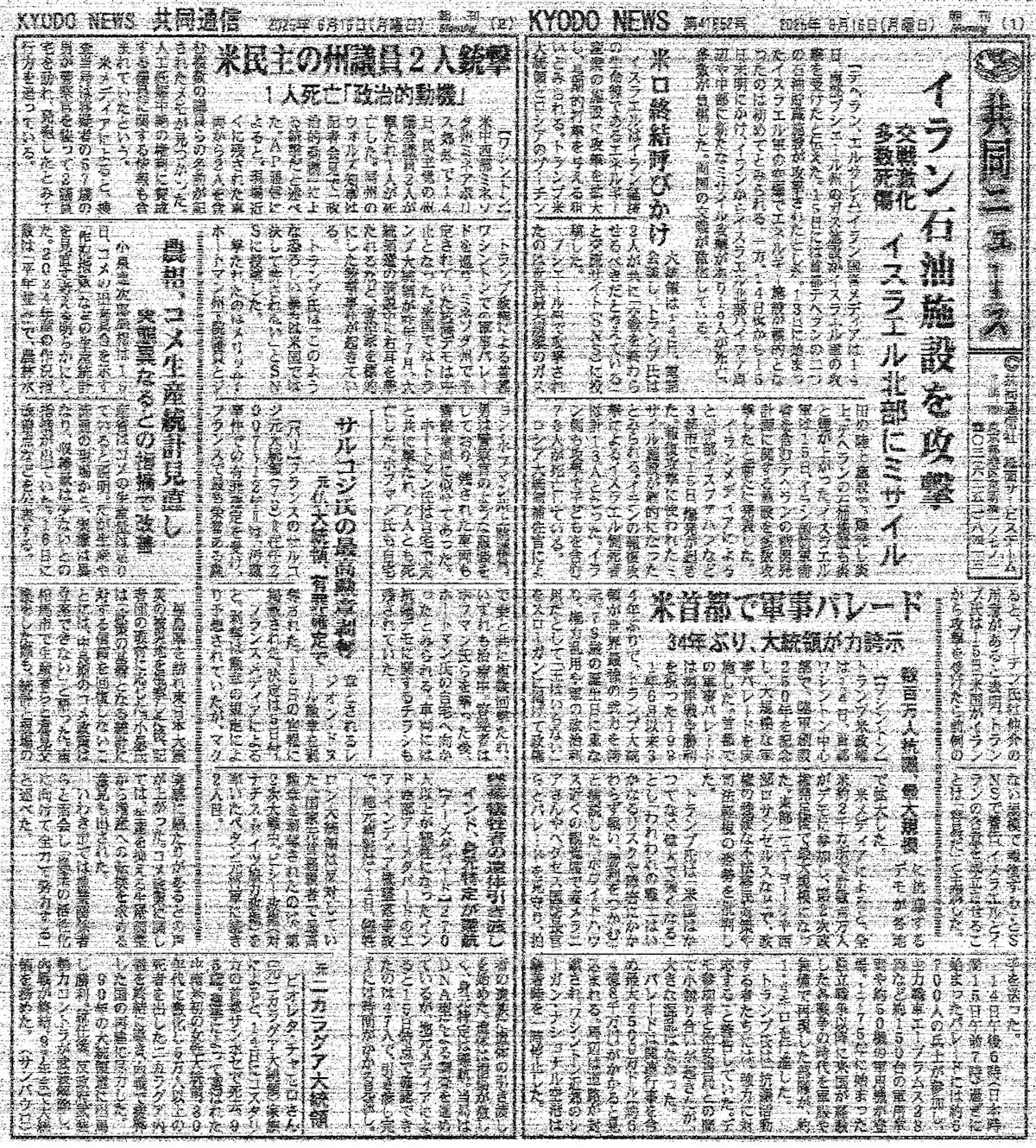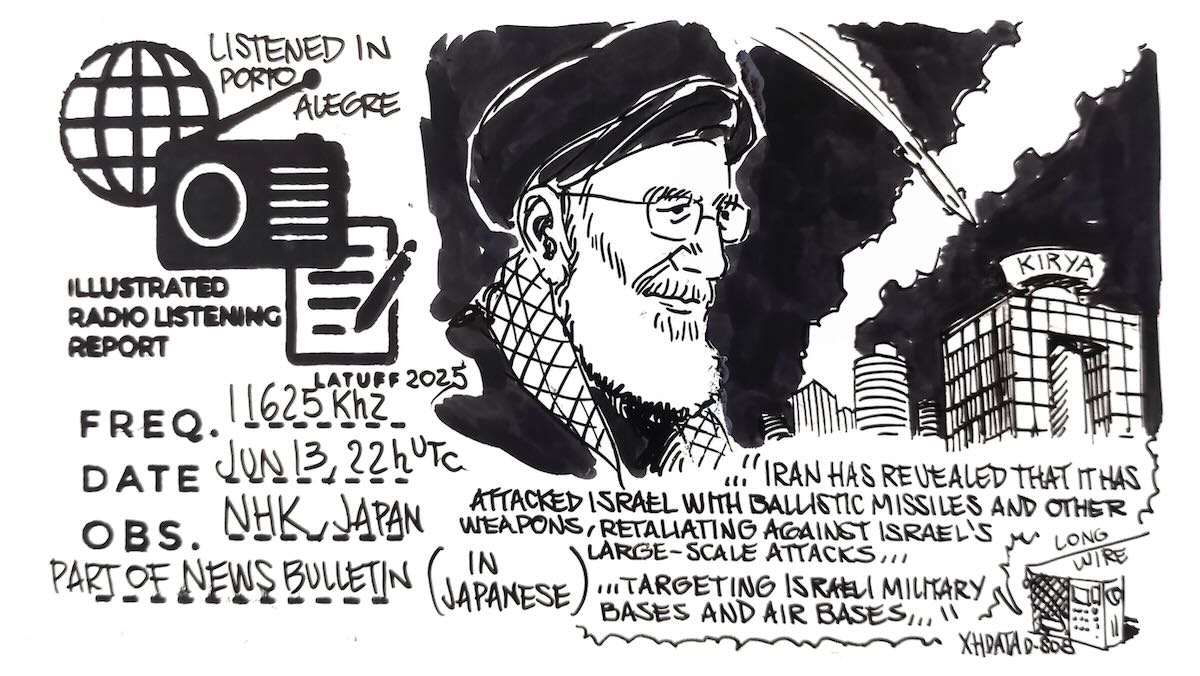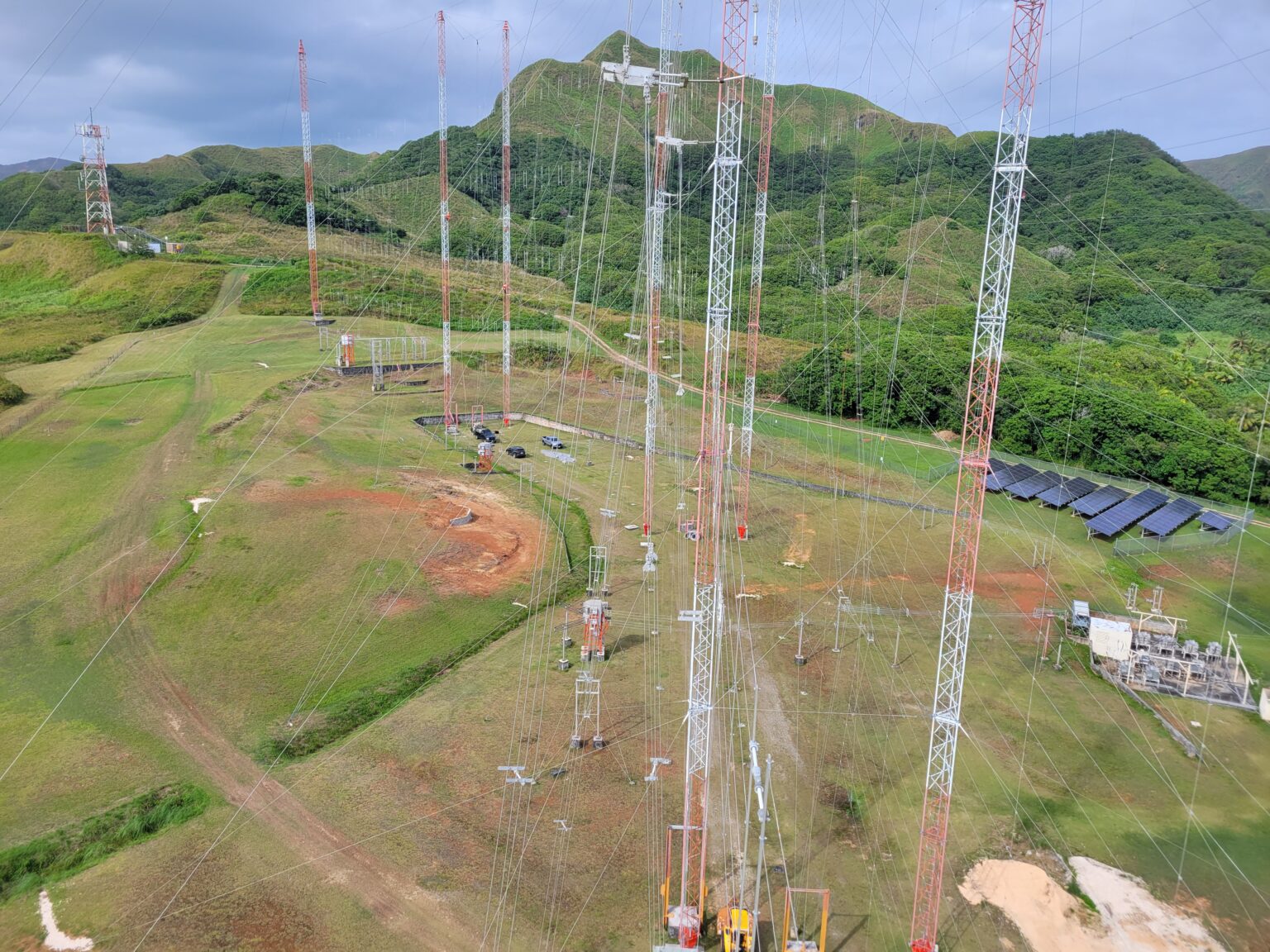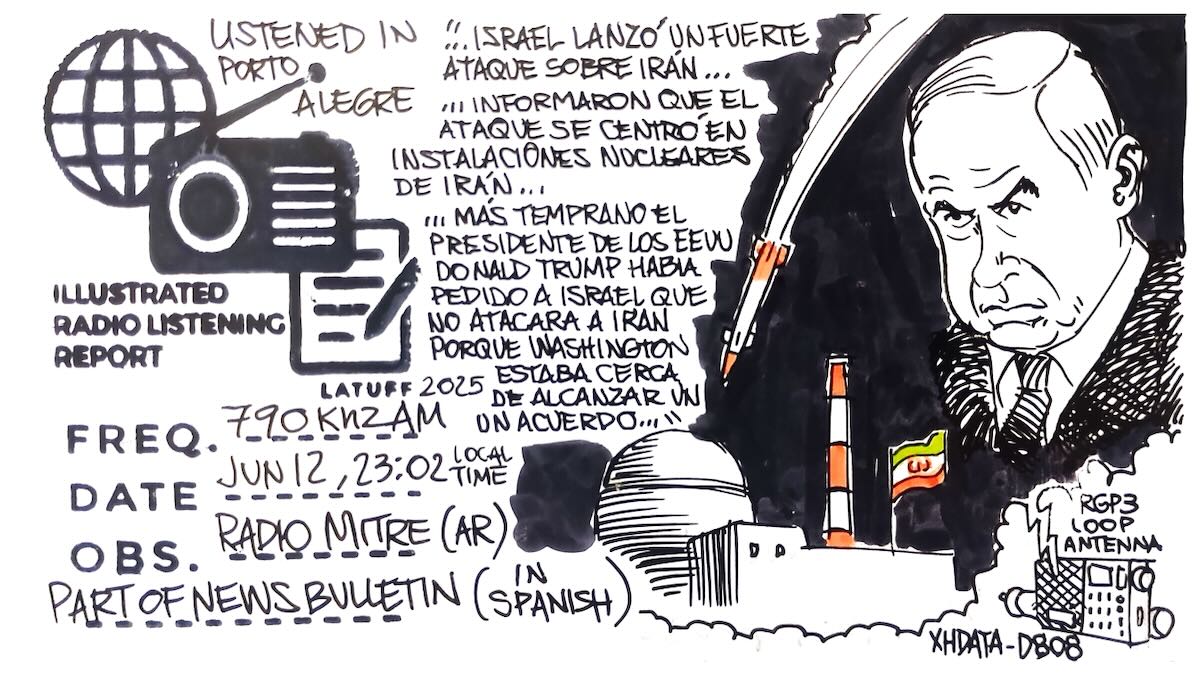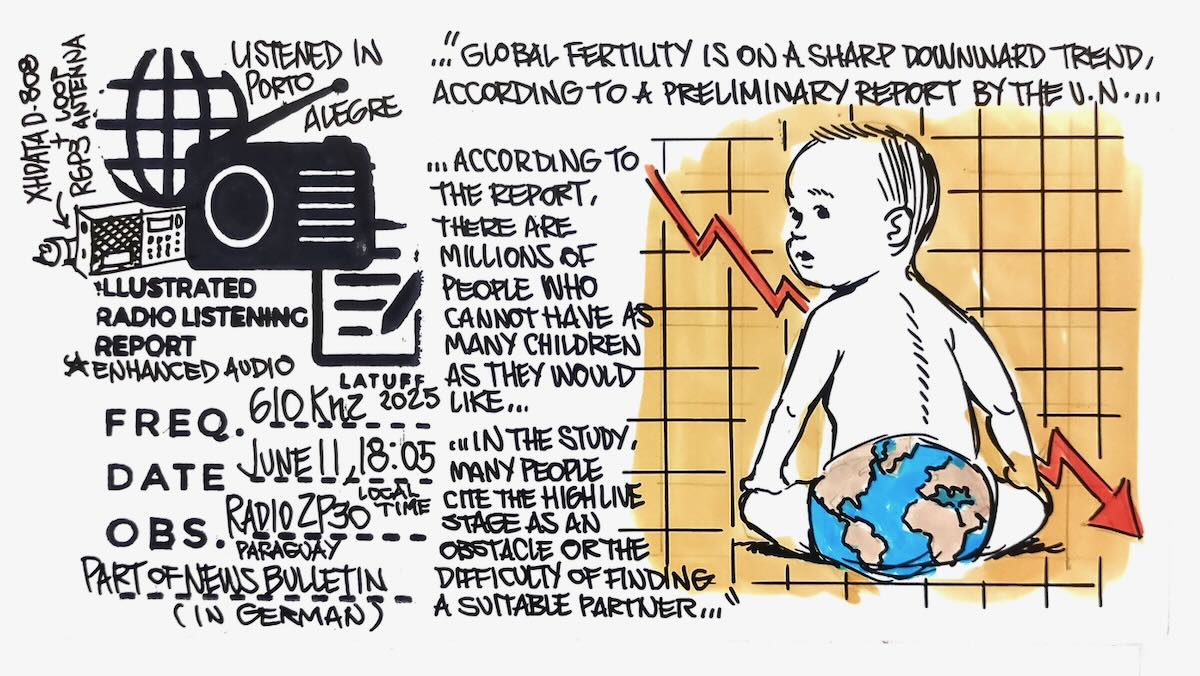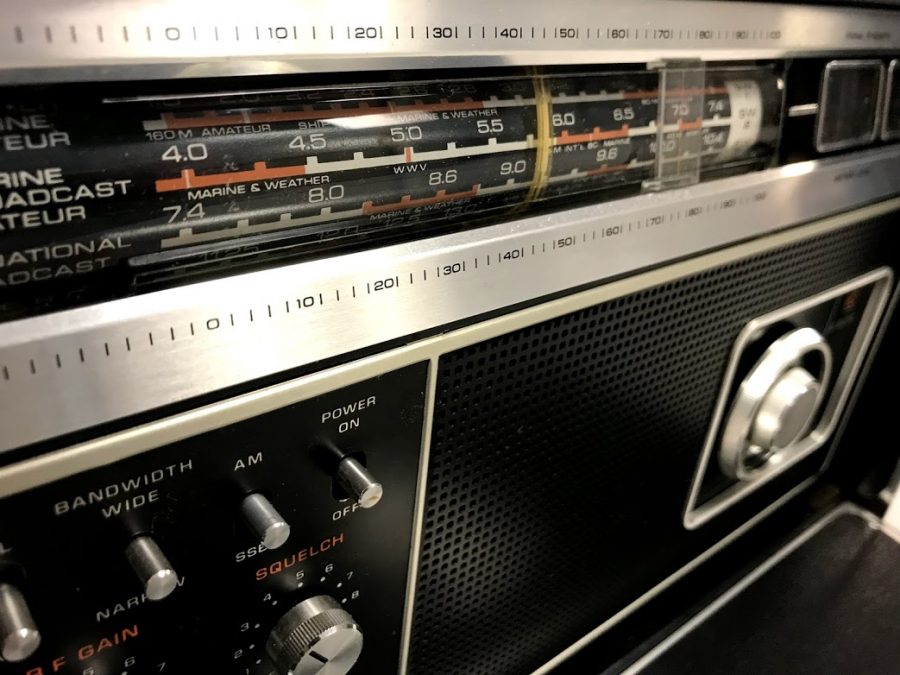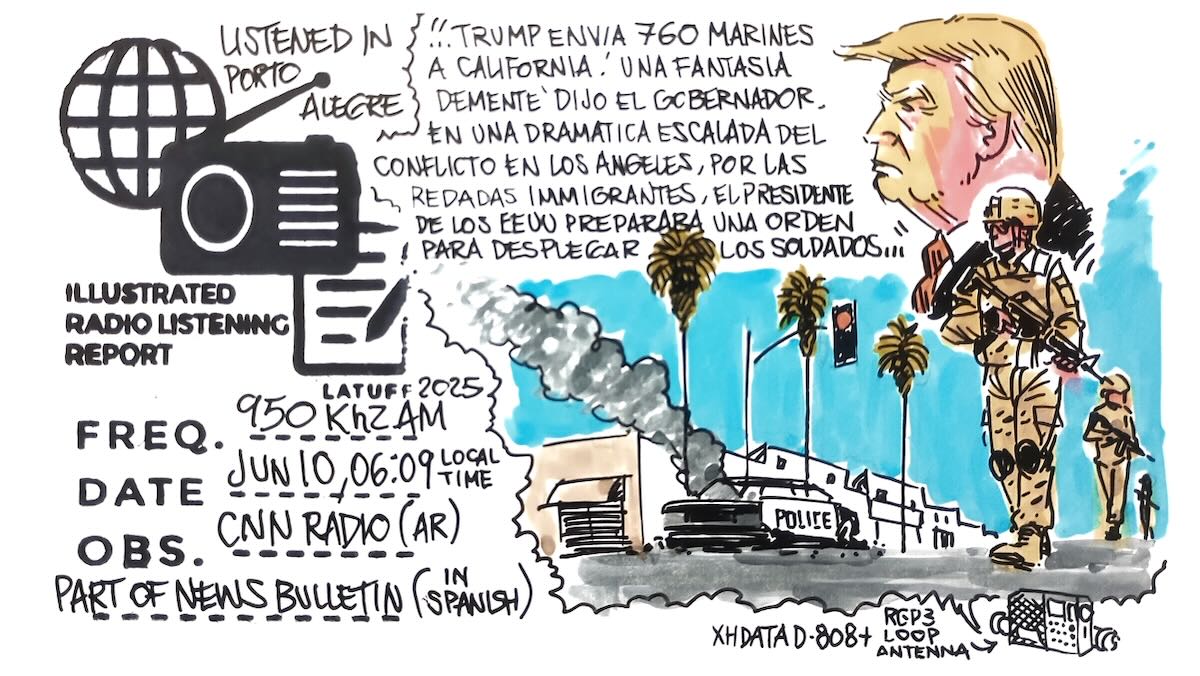Many thanks to SWLing Post contributor and noted political cartoonist, Carlos Latuff, who shares the following illustrated radio listening report of recent CGTN broadcasts along with a Kyodo News radiofax.
Click here to view on YouTube.
Click here to view on YouTube.
Kyodo News Radiofax
Kyodo News Morning Edition, radiofax received in Porto Alegre, June 16, 16970 kHz (USB):
- Iranian oil facilities attacked, missiles fired into northern Israel
- Two Democratic state legislators shot, one dead, ‘politically motivated’
- Agriculture Minister (of Japan) announces review of rice statistics
- Trump aims to show power as he holds first military parade in 34 years in US capital
- Former French president Sarkozy stripped of top French medal after conviction
- Former Nicaraguan president Violeta Chamorro dies at age 95


